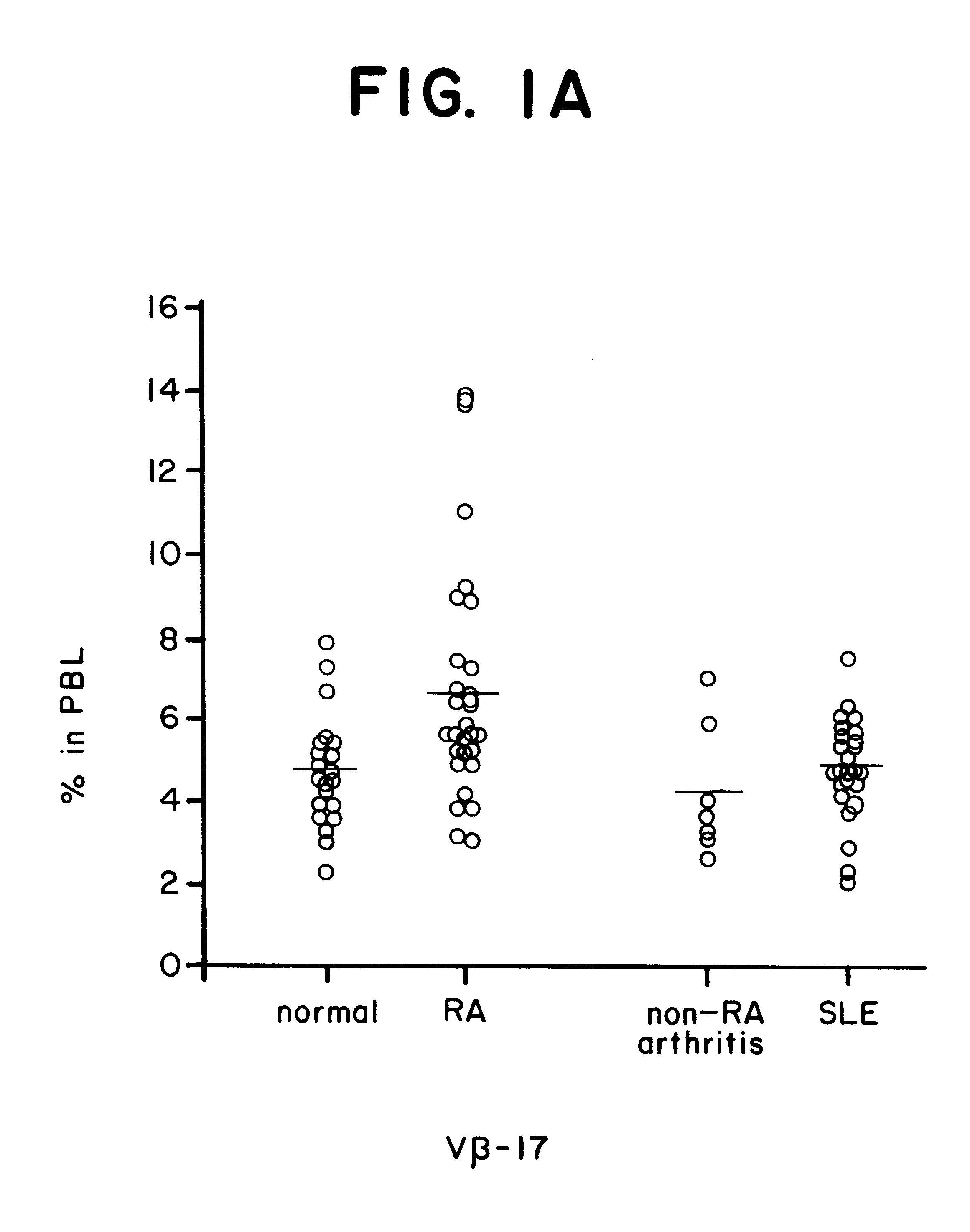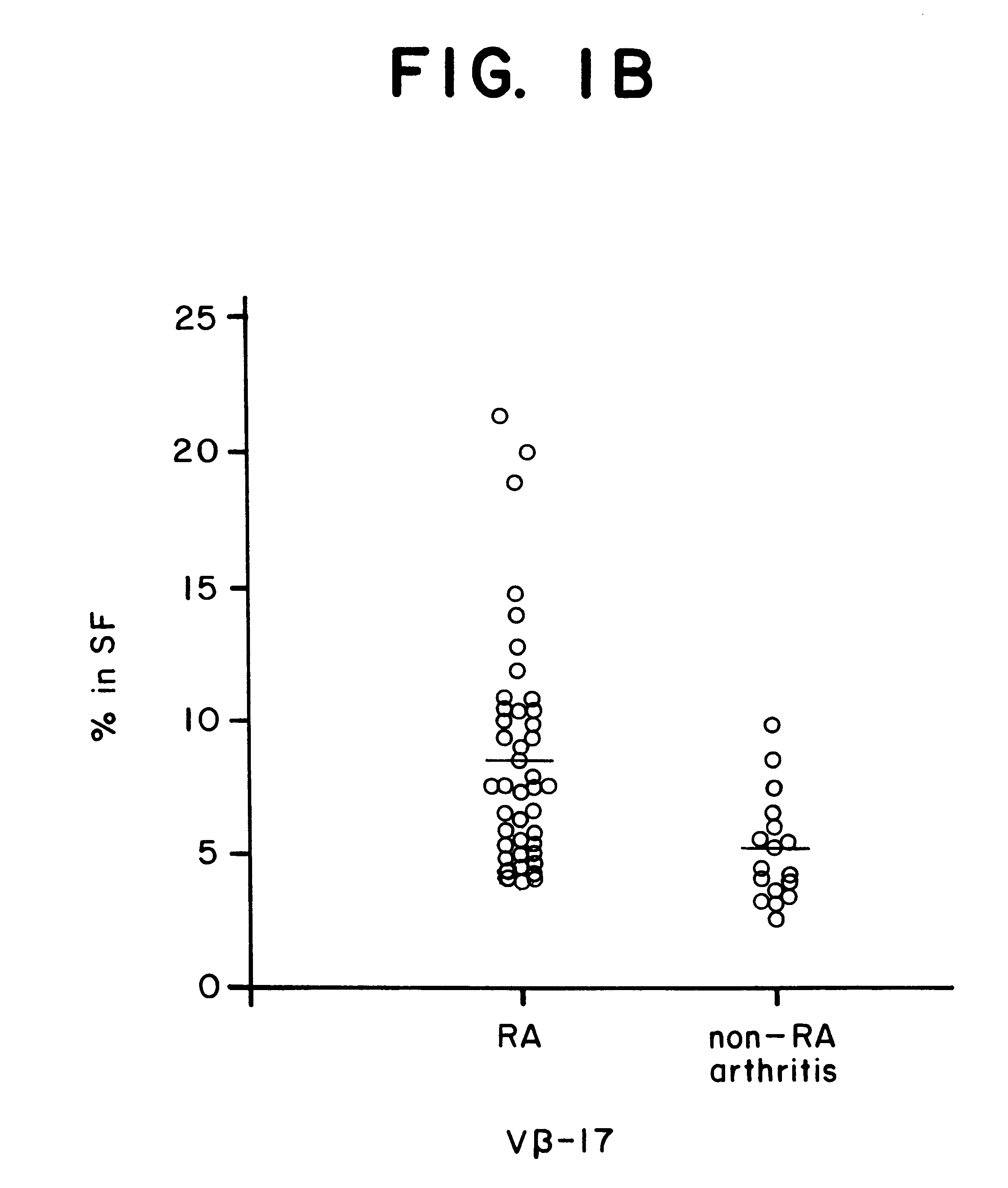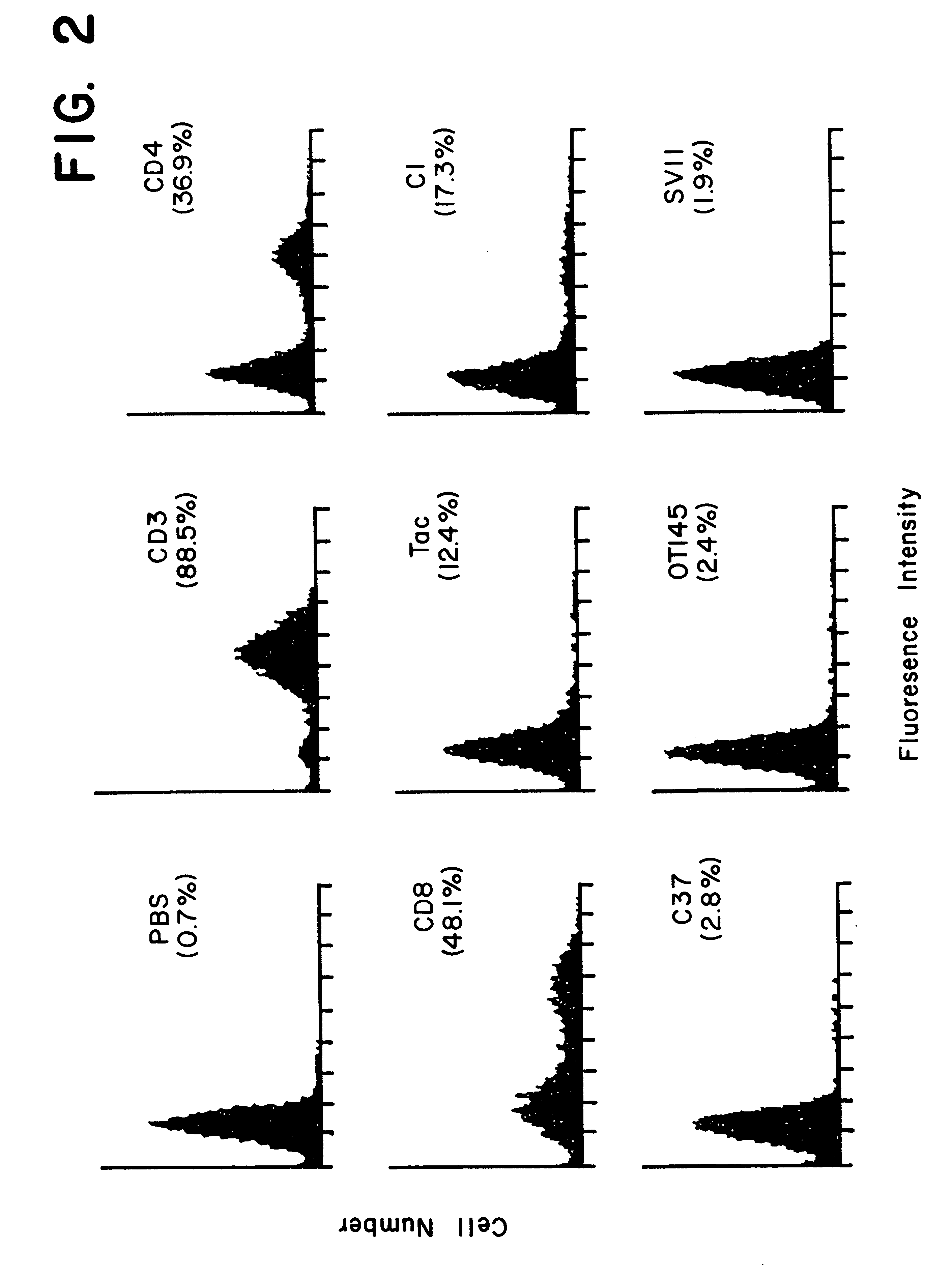Conserved T-cell receptor sequences
a technology of t-cell receptor and conserved t-cell, which is applied in the field of conserved t-cell receptor sequences, can solve problems such as conflicting approaches
- Summary
- Abstract
- Description
- Claims
- Application Information
AI Technical Summary
Problems solved by technology
Method used
Image
Examples
example 2
PB MNC from healthy subjects and from patients with seropositive RA, non-RA inflammatory arthritis, or SLE were isolated and the percentage of CD3-positive cells expressing the TCR V.beta. gene product identified by a panel of anti-TCR mAb determined by indirect immunofluoresence analysis. The mean percentage of T cells reactive with mAb C37 (V.beta. 5.2, 5.3), OT145 (V.beta. 6.7a) , 16G8 (V.beta. 8), or S511 (V.beta. 12) is similar in each of the groups tested (Table 1), a result consistent with previous studies of T cell repertoire in autoimmune disease which used these monoclonal reagents (Posnett et al, J. Immunol., 1988, 141:1963; Gudmundsson et al., Scand. J. Immunol., 1992, 36:681). In contrast, analysis of CD3-positive PB cells reactive with the more recently available mAb C1, specific for the V.beta. 17 TCR gene product, demonstrates a significant increase in the mean percentage of V.beta. 17-positive cells in RA patients when compared with the normal subjects or control pa...
example 3
To characterize the T cell repertoire at the site of pathology in patients with RA, the synovial fluid, SF T cells were isolated from 49 patients with seropositive RA and analyzed for TCR V.beta. gene usage by indirect immunofluoresence staining (Table 1 and FIGS. 1A and 1B). The mean percentage of CD3-positive cells reactive with the V.beta. 17-specific mAb C1 is significantly elevated (p=0.001) in the RA patients (8.5%+4.1) when compared with the percentage V.beta. 17-positive cells in the 19 SF specimens from patients with non-RA inflammatory arthritis (5.3%+2.0). Strikingly, 31% (15 / 49) of the RA fluid samples and 0 / 19 of the control samples contain greater than 10% V.beta. 17-positive T cells (FIGS. 1A and 1B). In contrast, no significant differences were noted between RA and control SF in the percentages of V.beta. 5.2 / 5.3, V.beta. 6.7a, V.beta. 8, or V.beta. 12-positive T cells.
A representative study of SF T cells from an RA patient with an elevated percentage of V.beta. 17-p...
example 4
Two color immunofluorescence analysis was performed on 5 RA SF samples and on 3 non-RA inflammatory arthritis SF samples, all of which contained less than 10% V.beta. 17-positive T cells (Table 2). Th SF cells were stained with anti-V.beta. 3 or anti-V.beta. 17 mAb and FITC-goat anti-mouse IgG, followed by phycoerythrin anti-IL-2 receptor antibody (anti-p55-TAC) and immunoflourescence was assessed on a cytofluorograph. The Tac-positive cells are found almost exclusively among the CD4-positive SF T cells from the RA patients. Moreover, Tac-positive T cells were enriched among the V.beta. 17-positive T cells from the RA SF, but not from the non-RA arthritis SF. Cytofluorograph histograms demonstrating Tac expression on a high proportion of V.beta. 17-positive T cells (approximately 45%), but not V.beta. 3-positive T cells (less than 10%), from an RA SF specimen are shown in FIG. 3. Thus, even RA SF that do not contain a markedly expanded V.beta. 17-positive T cell population show evid...
PUM
| Property | Measurement | Unit |
|---|---|---|
| concentration | aaaaa | aaaaa |
| concentration | aaaaa | aaaaa |
| junctional flexibility | aaaaa | aaaaa |
Abstract
Description
Claims
Application Information
 Login to View More
Login to View More - R&D
- Intellectual Property
- Life Sciences
- Materials
- Tech Scout
- Unparalleled Data Quality
- Higher Quality Content
- 60% Fewer Hallucinations
Browse by: Latest US Patents, China's latest patents, Technical Efficacy Thesaurus, Application Domain, Technology Topic, Popular Technical Reports.
© 2025 PatSnap. All rights reserved.Legal|Privacy policy|Modern Slavery Act Transparency Statement|Sitemap|About US| Contact US: help@patsnap.com



